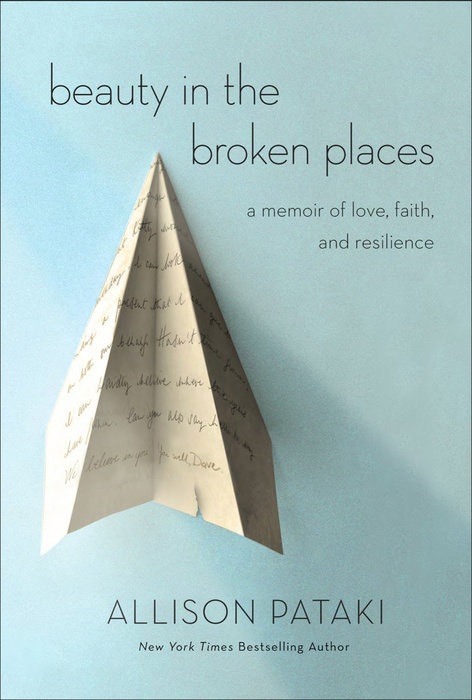For Readers & Book Clubs

Beauty in the Broken Places
TOPICS AND QUESTIONS FOR DISCUSSION
- The title of this book, Beauty in the Broken Places, speaks to brokenness and pain, but also to the beauty that can be found in places of suffering and hardship. It is inspired by the Ernest Hemingway quotation that is the book’s epigraph: “The world breaks everyone and afterward many are strong at the broken places.” Discuss this quotation and examine how both these elements – beauty and brokenness – are at play in this story.
- Allison speaks extensively about her support system and how she had to learn to rely on family and friends in a way she never had before. Discuss the importance of “the tribe” in getting through life’s hardships. Which figures in this story struck you as particularly poignant figures of grace and love?
- Lee Woodruff welcomes Allison to “the Club of the Bad Thing.” Allison responds that it was “a club I wanted no part of.” Discuss moments in your life when you felt as though you had suddenly been pulled into “the Club of the Bad Thing.” How did you get through those times?
- Allison writes at the end of the book: “Our marriage looks different today than it did a year ago, but isn’t that the case for any marriage? Isn’t marriage a dynamic thing in which two people are constantly growing and learning and evolving—and isn’t the key to honor and cherish and nurture your love for your partner even as you grow and learn and evolve? Even through the process of regrowing a brain and fixing a hole in one’s heart?” Discuss the shifting nature of marriage and other long-term relationships. What is the hardest thing about a long-term relationship? What is the key to making these relationships work?
- Interspersed throughout the memoir are flashbacks of the early days of Allison’s and Dave’s relationship. What purpose did these scenes serve?
- Allison and Dave speak about the medical causes of this highly unlikely stroke. Did you find yourself interested in the medical details, or were you more drawn to the personal details of their family and their relationship?
- This project was born originally out of letters. What did you think of the “Dear Dave” letters that Allison included?
- In Chapter 15, Allison, who identifies as a Christian, and Omar, who identifies as a Muslim, speak about faith and how their respective beliefs and values impact how they treat others, as well as how they navigate life’s ups and downs. What role, if any, does faith have in your life? How does your faith appear similar to or different from that of the author’s?
- Allison and Dave both speak at the end of this book about the importance of gratitude, and how the stroke has changed their outlook on the importance of daily gratitude and on not ever taking life for granted. What did you think of this? Do you agree that gratitude is important? What other life lessons might be gleaned from an event as disruptive as this stroke?
- Allison admits that she was uncomfortable with being in the position of “taker.” She preferred to be the one giving help, as opposed to receiving it. She realized that this came, in part, from a need to feel like she was in control and invincible, and that this “illusion” of control was shattered only after Dave’s stroke. Discuss how this might be relevant in your own life. Do you tend to feel like you are in control in your life? Or is control an illusion?
- When you are going through particularly difficult moments in life, what sort of support do you find to be the most helpful and needed? How do you offer support to those in your life when they need it?
- What memories would you be most heartbroken to lose? What memories would be the most devastating for you to see your loved ones lose?
